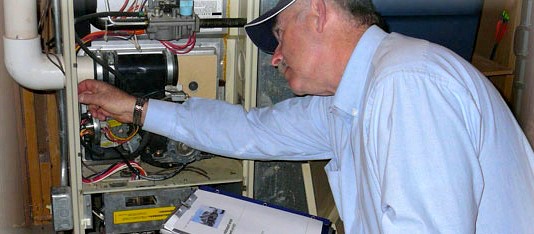How Infrared Scans Helps with Detecting Water, Fire, and Mold Damage?
Learn how home mold testing and infrared scan home inspection help restore water, fire, and mold damage efficiently.
Restoring a property after water, fire, or mold damage requires precision and quick action. Detecting hidden moisture, heat anomalies, and potential mold growth early is crucial to prevent further damage. Thermal imaging has emerged as a technology that should be leveraged during restoration efforts because it provides insights traditional methods might miss.
Whether you are dealing with a recent water leak, fire aftermath, or suspected mold, understanding how an infrared scan home inspection works, along with performing thorough home mold testing, should help homeowners and professionals address problems faster and more accurately.

Supporting Home Mold Testing with Infrared Scans
Hidden mold is often the most challenging problem in a damaged property. Surface inspection might miss spores growing behind walls or under carpets. Thermal imaging should play a key role in identifying areas at risk.
Professional home mold testing combined with infrared imaging provides a more complete assessment. The thermal scan identifies moisture-prone zones, while mold testing confirms the presence of spores. Homeowners should benefit from this dual approach, as it ensures remediation addresses both the cause and the effect.
For example, after a water leak, thermal imaging should reveal the extent of moisture penetration. Home mold testing then validates whether mold has started to develop, guiding the cleanup strategy.
Water Damage Restoration
Water damage is often deceptive because it may not show up immediately. Floors may warp, walls may appear intact, and ceilings may hide leaks. Thermal imaging should allow restoration professionals to detect moisture behind these surfaces before it leads to structural issues.
Using thermal scans, water restoration teams can:
● Identify hidden leaks and damp areas.
● Monitor drying progress after water extraction.
● Prevent secondary damage from untreated moisture.
This proactive detection should save time, money, and potential structural repairs. Infrared technology ensures that water damage restoration is both precise and effective.
Fire Damage Restoration
Fire damage restoration is not just about repairing burnt materials. Smoke and heat can penetrate walls, ceilings, and insulation, creating hidden risks. Thermal imaging should help identify hotspots that may still carry residual heat or hidden fire damage.
By detecting these areas, professionals can ensure complete mitigation. For instance, a wall that appears intact may still be hot internally, posing a risk of re-ignition. Infrared scans provide a detailed heat map, guiding restoration efforts efficiently and safely.
Preventing Mold After Fire or Water Damage
Moisture following a fire or water incident often leads to mold growth if not addressed promptly. Thermal imaging should detect damp zones that could become breeding grounds for mold.
Pairing this with home mold testing ensures that remediation focuses on areas that actually need treatment. Early detection should allow homeowners to prevent long-term health risks and structural damage.
Steps to Implement Thermal Imaging in Restoration
To maximize the benefits of thermal imaging in restoration efforts:
- Initial Assessment: Conduct a thermal scan to locate hidden moisture, heat anomalies, or potential mold growth.
- Confirm with Testing: Use home mold testing to validate areas with potential mold presence.
- Targeted Restoration: Focus water, fire, or mold remediation efforts on identified hotspots.
- Monitor Progress: Use follow-up infrared scans to ensure all affected areas are fully addressed.
- Final Verification: Confirm drying, cooling, and mold remediation are complete before declaring the property safe.
Following these steps should reduce unnecessary repairs, lower costs, and ensure a safer environment for homeowners.
Conclusion
Thermal imaging is a powerful tool that should be integrated into any water, fire, or mold restoration project. It provides a non-invasive way to detect hidden damage, supports home mold testing, and ensures restoration efforts are precise and effective.
Using an infrared scan home inspection allows restoration teams to identify moisture, heat anomalies, and mold risks early, preventing further damage and health hazards. Homeowners should embrace this technology to protect their investment, speed up recovery, and create safer living conditions.
Incorporating thermal imaging alongside traditional testing and remediation methods ensures that restoration is thorough, accurate, and efficient. Acting proactively should save both money and stress while maintaining the long-term safety of the property.